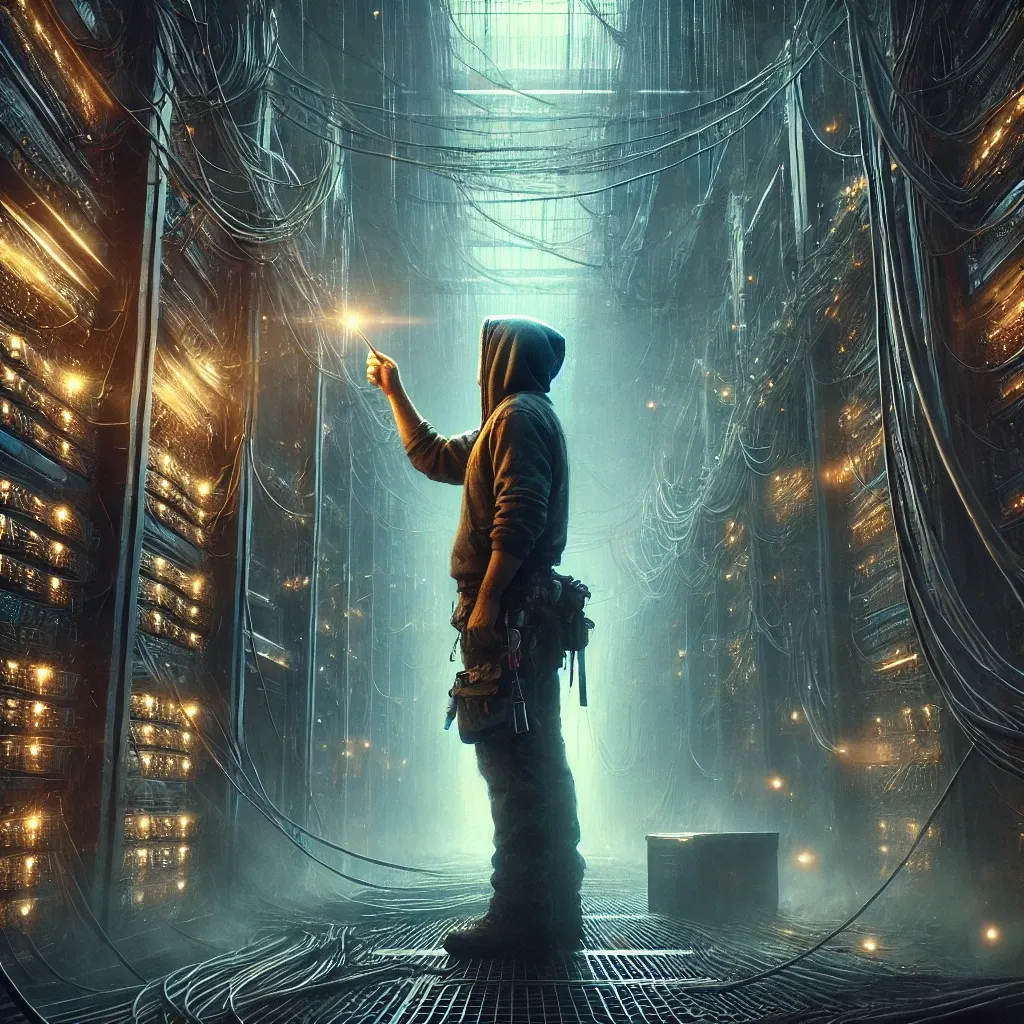The Threshold Between Worlds

There’s a moment—imperceptible to most—when the tangible world slams into the digital one, where copper and glass transmute into pulses of light and voltage. You don’t just know it exists. You see it. You feel it. It’s not something they teach in books or certification exams. It’s something you absorb, like the way a seasoned outdoorsman senses a storm before the first gust of wind bends the grass.
This is the bottom of the OSI stack, the foundation of our electronic existence, the place where physics and human ingenuity collide. It’s where electrons pulse through silicon pathways, where fiber-optic strands hum with the whispers of distant voices, where radio waves carve their own unseen highways through the air. And if you’ve been in the trenches long enough, you can tell when something’s wrong before the dashboards scream about it.
A crimped Ethernet cable, an unseated SFP, an overheated router struggling against entropy—these aren’t just problems. They have a smell. A rhythm. A presence. The stale, metallic scent of overheating chips, the staccato bursts of a link flapping out of sync, the odd silence that accompanies a circuit that should be alive but isn’t. This is where technology and instinct intertwine, where hands-on experience trumps theoretical knowledge.
The Psychology of the Invisible
Most people interact with the internet like magic. They tap their screens, demand immediate results, and curse the buffer wheel as if it's a personal insult. They don’t see the infrastructure beneath, the endless miles of fiber laid across deserts and under oceans, the fragile dance of timing signals keeping everything in step. They don’t think about the heat stress on a core router in a forgotten closet, the way a misconfigured VLAN can send data into a void, or the way human hands still—despite all automation—make the difference between uptime and catastrophe.
For those of us who live here, on the boundary between real and digital, there’s a psychological weight to it. The awareness that, at any moment, a backhoe in Ohio, a lightning strike in Nebraska, or a distracted tech in a distant data center can ripple out into chaos. You’re never fully off duty. The network is a living thing, a nervous system stretched across continents, and once you’ve wired yourself into it, you feel its pain.
There’s a reason old-school network engineers have that half-worn, road-weary look. It’s not just the long hours or the caffeine dependency. It’s the mental space they occupy, a constant peripheral awareness of how fragile the system really is. When you’ve built networks from scratch, when you’ve brought dead systems back to life with nothing but a cable tester and a gut feeling, you don’t just work in IT. You become part of the machinery.
The Human Element in the Machine
At some point, the industry decided everything should be abstracted away, neatly packaged in cloud dashboards and AI-driven monitoring. But the physical layer doesn’t care about abstraction. A fiber splice done poorly will introduce ghosts into a network, invisible echoes of lost packets no amount of software can wish away. A grounding issue in a data center will drive an engineer insane before the cause is found.
Those who work in this space develop an almost superstitious reverence for the physical. They understand that cables should be dressed neatly, not just for aesthetics, but because a well-ordered system breeds reliability. They know that just because a connection should work doesn’t mean it will—and that sometimes, just re-seating a module can solve what a hundred diagnostics could not.
And yet, as much as we talk about redundancy, about five-nines uptime, about self-healing networks, the truth is that the internet is held together with zip ties, coffee, and the stubborn resolve of a dwindling number of people who understand it at a gut level.
There is no AI for intuition.
No cloud dashboard that can tell you when something just feels wrong.
That’s the space between the physical and the virtual—the place where raw infrastructure becomes something greater. It’s a space you can only truly know by working in it, feeling it, listening to it.
And once you’ve been there, you never really leave.
-Sometimes
--Bryan